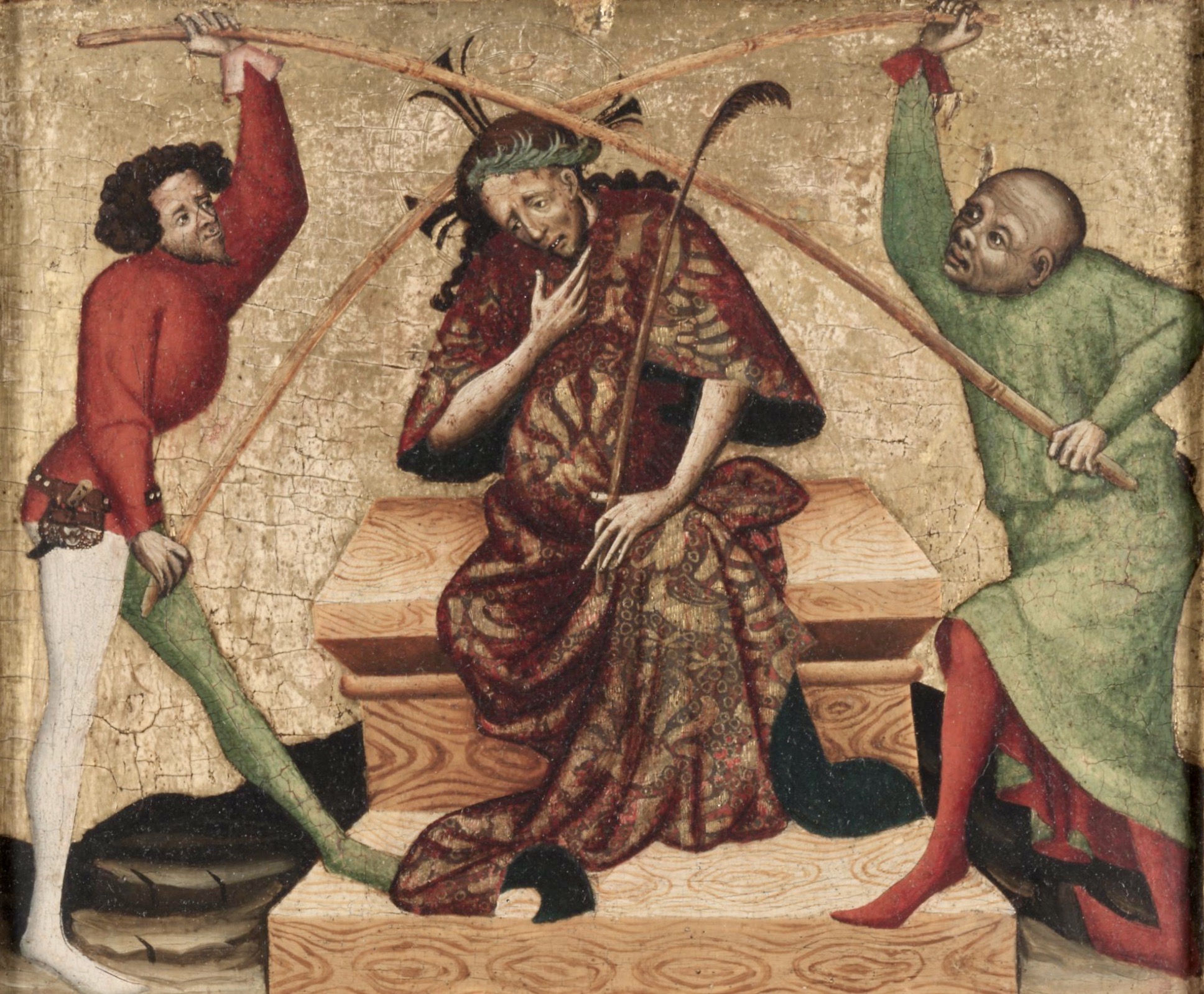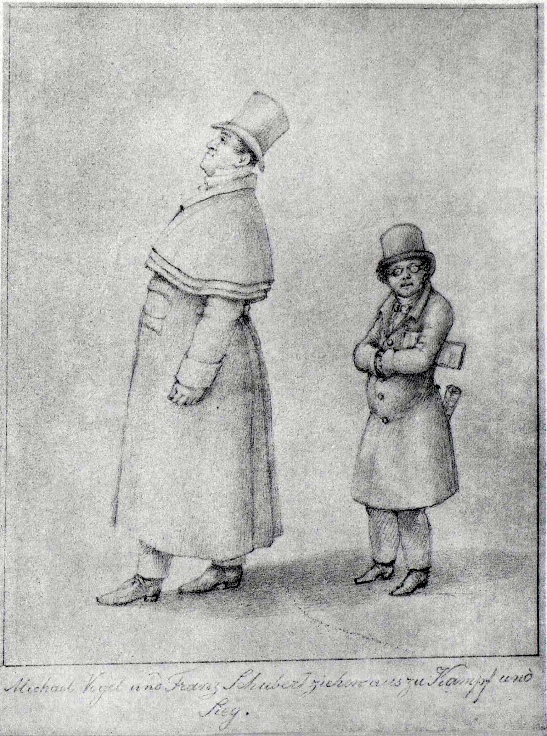|
History Of Syphilis
The first recorded outbreak of syphilis in Europe occurred in 1494/1495 in Naples, Italy, during a French invasion. Because it was spread geographically by French troops returning from that campaign, the disease was known as "French disease", and it was not until 1530 that the term "syphilis" was first applied by the Italian physician and poet Girolamo Fracastoro. The causative organism, ''Treponema pallidum'', was first identified by Fritz Schaudinn and Erich Hoffmann in 1905 at the Charité Clinic in Berlin. The first effective treatment, Salvarsan, was developed in 1910 by Sahachiro Hata in the laboratory of Paul Ehrlich. It was followed by the introduction of penicillin in 1943. Many well-known figures, including Scott Joplin, Franz Schubert, Friedrich Nietzsche, Al Capone, and Édouard Manet are believed to have contracted the disease. Origin The history of syphilis has been well studied, but the exact origin of the disease was the source of debate until archaeological an ... [...More Info...] [...Related Items...] OR: [Wikipedia] [Google] [Baidu] [Amazon] |
Franz Schubert
Franz Peter Schubert (; ; 31 January 179719 November 1828) was an Austrian composer of the late Classical period (music), Classical and early Romantic music, Romantic eras. Despite his short life, Schubert left behind a List of compositions by Franz Schubert, vast ''oeuvre'', including more than 600 ''Lieder'' (art songs in German) and other vocal works, seven complete symphonies, sacred music, operas, incidental music, and a large body of piano and chamber music. His major works include "Erlkönig (Schubert), Erlkönig", "Gretchen am Spinnrade", and "Ave Maria (Schubert), Ave Maria"; the Trout Quintet, ''Trout'' Quintet; the Symphony No. 8 (Schubert), Symphony No. 8 in B minor (''Unfinished''); the Symphony No. 9 (Schubert), Symphony No. 9 in C major (''Great''); the String Quartet No. 14 (Schubert), String Quartet No. 14 in D minor (''Death and the Maiden''); the String Quintet (Schubert), String Quintet in C major; the Impromptus (Schubert), Impromptus for solo piano; the S ... [...More Info...] [...Related Items...] OR: [Wikipedia] [Google] [Baidu] [Amazon] |
Endemic (epidemiology)
In epidemiology, an infection is said to be endemic in a specific population or populated place when that infection is constantly present, or maintained at a baseline level, without extra infections being brought into the group as a result of travel or similar means. The term describes the distribution of an infectious disease among a group of people or within a populated area. An endemic disease always has a steady, predictable number of people getting sick, but that number can be high ('' hyperendemic'') or low (''hypoendemic''), and the disease can be severe or mild. Also, a disease that is usually endemic can become epidemic. For example, chickenpox is endemic in the United Kingdom, but malaria is not. Every year, there are a few cases of malaria reported in the UK, but these do not lead to sustained transmission in the population due to the lack of a suitable vector (mosquitoes of the genus '' Anopheles''). Consequently, there is no constant baseline level of malaria inf ... [...More Info...] [...Related Items...] OR: [Wikipedia] [Google] [Baidu] [Amazon] |
Pinta (disease)
Pinta (also known as azul, carate, empeines, lota, mal del pinto, and tina) is a human skin disease caused by infection with the spirochete '' Treponema carateum'', which is morphologically and serologically indistinguishable from the bacterium that causes syphilis and bejel. The disease was previously known to be endemic to Mexico, Central America, and South America; it may have been eradicated since, with the latest case occurring in Brazil in 2020. Signs and symptoms Pinta, the least severe of the treponemal infections being limited to the skin, is thought to be transmitted by skin-to-skin contact (similar to bejel and yaws), and after an incubation period of two to three weeks, produces a raised papule, which enlarges and becomes hyperkeratotic (scaly/flaky). Lesions are usually present on the exposed surface of arms and legs. Local lymph nodes might be enlarged. Three to nine months later, further thickened and flat lesions (pintids) appear all over the body. These gen ... [...More Info...] [...Related Items...] OR: [Wikipedia] [Google] [Baidu] [Amazon] |
Yaws
Yaws is a tropical infection of the skin, bones, and joints caused by the spirochete bacterium ''Treponema pallidum pertenue''. The disease begins with a round, hard swelling of the skin, in diameter. The center may break open and form an ulcer. This initial skin lesion typically heals after 3–6 months. After weeks to years, joints and bones may become painful, fatigue may develop, and new skin lesions may appear. The skin of the palms of the hands and the soles of the feet may become thick and break open. The bones (especially those of the nose) may become misshapen. After 5 years or more, large areas of skin may die, leaving scars. Yaws is spread by direct contact with the fluid from a lesion of an infected person. The contact is usually nonsexual. The disease is most common among children, who spread it by playing together. Other related treponemal diseases are bejel (''T. pallidum endemicum''), pinta (''T. carateum''), and syphilis (''T. p. pallidum''). The appearan ... [...More Info...] [...Related Items...] OR: [Wikipedia] [Google] [Baidu] [Amazon] |
Nonvenereal Endemic Syphilis
Bejel, or endemic syphilis, is a chronic skin and tissue disease caused by infection by the ''endemicum'' subspecies of the spirochete ''Treponema pallidum''. Bejel is one of the "endemic treponematoses" (endemic infections caused by spiral-shaped bacteria called treponemes), a group that also includes yaws and pinta. Typically, endemic trepanematoses begin with localized lesions on the skin or mucous membranes. Pinta is limited to affecting the skin, whereas bejel and yaws are considered to be invasive because they can also cause disease in bone and other internal tissues. Signs and symptoms Bejel usually begins in childhood as a small patch on the mucosa, often on the interior of the mouth, followed by the appearance of raised, eroding lesions on the limbs and trunk. Periostitis (inflammation) of the leg bones is commonly seen, and gummas of the nose and soft palate develop in later stages. Causes Although the organism that causes bejel, ''Treponema pallidum endemicum'', is ... [...More Info...] [...Related Items...] OR: [Wikipedia] [Google] [Baidu] [Amazon] |
Treponematosis
Treponematosis is a term used to individually describe any of the diseases caused by four members of the bacterial genus ''Treponema''. The four diseases are collectively referred to as treponematoses: * Syphilis (''Treponema pallidum pallidum'') * Yaws Yaws is a tropical infection of the skin, bones, and joints caused by the spirochete bacterium ''Treponema pallidum pertenue''. The disease begins with a round, hard swelling of the skin, in diameter. The center may break open and form an ulc ... (''Treponema pallidum pertenue'') * Bejel (''Treponema pallidum endemicum'') * Pinta (''Treponema carateum'') Traditional laboratory tests cannot distinguish the treponematoses. However, sequence differences among the ''T. pallidum'' subspecies have been identified. Molecular approaches involving PCR to identify these sequences are being developed. References External links Treponema Bacterium-related cutaneous conditions {{infectious-disease-stub ... [...More Info...] [...Related Items...] OR: [Wikipedia] [Google] [Baidu] [Amazon] |
Phylogenetics
In biology, phylogenetics () is the study of the evolutionary history of life using observable characteristics of organisms (or genes), which is known as phylogenetic inference. It infers the relationship among organisms based on empirical data and observed heritable traits of DNA sequences, protein amino acid sequences, and morphology. The results are a phylogenetic tree—a diagram depicting the hypothetical relationships among the organisms, reflecting their inferred evolutionary history. The tips of a phylogenetic tree represent the observed entities, which can be living taxa or fossils. A phylogenetic diagram can be rooted or unrooted. A rooted tree diagram indicates the hypothetical common ancestor of the taxa represented on the tree. An unrooted tree diagram (a network) makes no assumption about directionality of character state transformation, and does not show the origin or "root" of the taxa in question. In addition to their use for inferring phylogenetic pa ... [...More Info...] [...Related Items...] OR: [Wikipedia] [Google] [Baidu] [Amazon] |
Columbian Exchange
The Columbian exchange, also known as the Columbian interchange, was the widespread transfer of plants, animals, and diseases between the New World (the Americas) in the Western Hemisphere, and the Old World (Afro-Eurasia) in the Eastern Hemisphere, from the late 15th century on. It is named after the explorer Christopher Columbus and is related to the European colonization of the Americas, European colonization and global trade following his Voyages of Christopher Columbus#First voyage, 1492 voyage. Some of the exchanges were deliberate while others were unintended. Communicable diseases of Old World origin resulted in an 80 to 95 percent reduction in the Indigenous peoples of the Americas, Indigenous population of the Americas from the 15th century onwards, and their extinction in the Influx of disease in the Caribbean, Caribbean. The cultures of both hemispheres were significantly impacted by the migration of people, both free and enslaved, from the Old World to the New. Eur ... [...More Info...] [...Related Items...] OR: [Wikipedia] [Google] [Baidu] [Amazon] |
Christopher Columbus
Christopher Columbus (; between 25 August and 31 October 1451 – 20 May 1506) was an Italians, Italian explorer and navigator from the Republic of Genoa who completed Voyages of Christopher Columbus, four Spanish-based voyages across the Atlantic Ocean sponsored by the Catholic Monarchs, opening the way for the widespread European Age of Discovery, exploration and colonization of the Americas. His expeditions were the first known European contact with the Caribbean and Central and South America. The name ''Christopher Columbus'' is the Anglicisation (linguistics), anglicization of the Latin . Growing up on the coast of Liguria, he went to sea at a young age and traveled widely, as far north as the British Isles and as far south as what is now Ghana. He married Portuguese noblewoman Filipa Moniz Perestrelo, who bore a son, Diego Columbus, Diego, and was based in Lisbon for several years. He later took a Castilian mistress, Beatriz Enríquez de Arana, who bore a son, Ferdinand ... [...More Info...] [...Related Items...] OR: [Wikipedia] [Google] [Baidu] [Amazon] |
Americas
The Americas, sometimes collectively called America, are a landmass comprising the totality of North America and South America.''Webster's New World College Dictionary'', 2010 by Wiley Publishing, Inc., Cleveland, Ohio. When viewed as a single continent, the Americas or America is the 2nd largest continent by area after Asia, and is the 3rd largest continent by population. The Americas make up most of the land in Earth's Western Hemisphere and comprise the New World. Along with their Lists of islands of the Americas, associated islands, the Americas cover 8% of Earth's total surface area and 28.4% of its land area. The topography is dominated by the American Cordillera, a long chain of mountains that runs the length of the west coast. The flatter eastern side of the Americas is dominated by large river basins, such as the Amazon basin, Amazon, St. Lawrence River–Great Lakes, Mississippi River System, Mississippi, and Río de la Plata Basin, La Plata basins. Since the Americ ... [...More Info...] [...Related Items...] OR: [Wikipedia] [Google] [Baidu] [Amazon] |
Syphilis
Syphilis () is a sexually transmitted infection caused by the bacterium ''Treponema pallidum'' subspecies ''pallidum''. The signs and symptoms depend on the stage it presents: primary, secondary, latent syphilis, latent or tertiary. The primary stage classically presents with a single chancre (a firm, painless, non-itchy Ulcer_(dermatology), skin ulceration usually between 1 cm and 2 cm in diameter), though there may be multiple sores. In secondary syphilis, a diffuse rash occurs, which frequently involves the palms of the hands and soles of the feet. There may also be sores in the mouth or vagina. Latent syphilis has no symptoms and can last years. In tertiary syphilis, there are Gumma (pathology), gummas (soft, non-cancerous growths), neurological problems, or heart symptoms. Syphilis has been known as "The Great Imitator, the great imitator", because it may cause symptoms similar to many other diseases. Syphilis is most commonly spread through human sexual activi ... [...More Info...] [...Related Items...] OR: [Wikipedia] [Google] [Baidu] [Amazon] |







